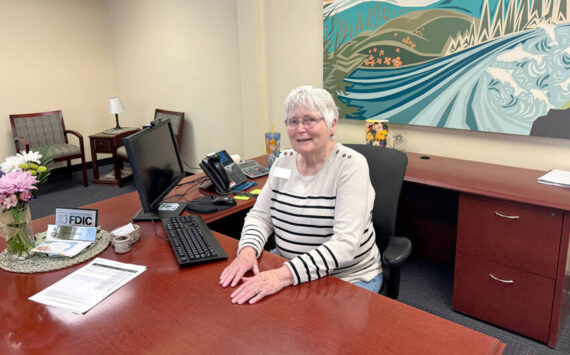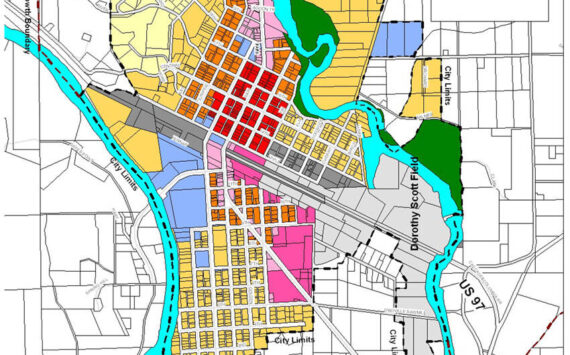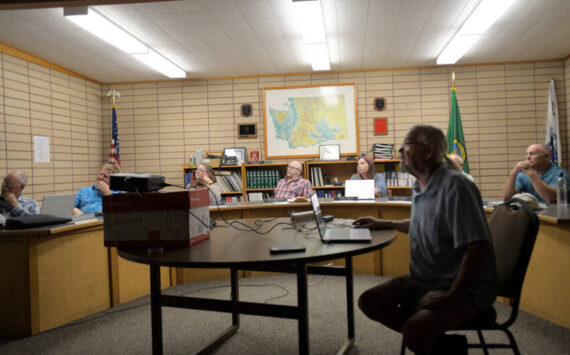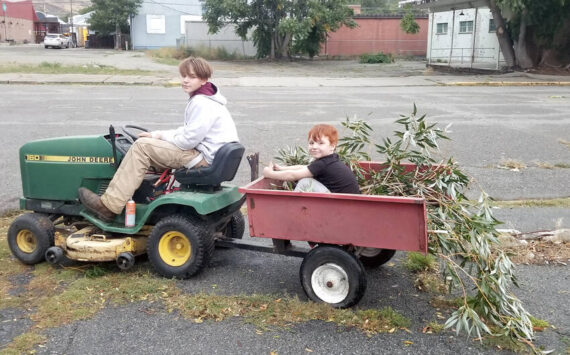TONASKET – The long and arduous process of making a new swimming pool in Tonasket officially moved into its next phase as the City Council voted to commit $17,980 to a study that will yield concrete options and cost estimates that can be put before the community for discussion.
The motion, initiated by new council member Claire Jeffko, was approved unanimously, though council member Jill Vugteveen was absent.
The council had been reluctant to move forward without other stakeholders in the pool project, as it will ultimately need the support of much more than city residents to become a reality. But as two years of discussion in the community wasn’t able to provide focus or a plan to move forward, the council determined it would need to take the lead in moving onto the next phase.
The city will pay Pool World of Spokane to produce cost estimates and visual renderings, based on the assumption that the new pool would be in the same place (Tonasket’s History Park) as the old one; that there won’t be problems with permitting or additional archaeological surveys, and that the pool would be a season, outdoor pool.
Options
Three options will be provided: a simple, moderately-sized lap pool of about 32×75 feet; a similar pool with an additional wading pool adjacent to it; and a multi-purpose pool with “zero entry” water features (to aid in handicapped access) and the ability to incorporate a water slide.
The work will take about two months to be completed, after which the council plans to arrange a forum for the Tonasket area (not just city) residents to discuss the available options.
There was some urgency to make a decision on whether to move forward or not. A major deadline for grant applications is March, 2014; missing that deadline would delay access to that type of state funding for another two years.
The money will be taken from what remains of a $50,000 capital improvement fund dedicated to the pool several years ago, half of which had been spent on the study that led to the original pool being condemned.
“The idea is once we have that information, we hold a public meetings … and see if there is a preferred option, or a combination of features,” said city planner Kurt Danison of Highlands Associates. “At that point we’d make a decision that this is the pool we want for the city of Tonasket. Then we’d know what it was going to cost … and then be in a position to make a grant request for that amount of money. With a 50 percent grant we’d know what our match would need to be.
“We could still apply, if federal money is still there, we could apply for a federal grant. If we got a state and federal, that could be a 90 percent match, but you still have to be able to walk in the door with the money for a 50 percent match, and then celebrate if you got both.”
Danison pointed out that getting into position to put together a solid grant proposal is likely the only way the project will come to fruition. Even the least-expensive option – based on a similar project in Davenport – is likely to cost upwards of $1.2 million just for construction.
Danison went through the ins and outs of much of the details of getting the project on solid footing, answering questions from both the council and from the family of Gordon Stangland, who last year bequeathed an unspecified amount of money to the project.
Many of the questions revolved around ways to cut costs, such as using the engineering and plans from previously completed projects elsewhere (such as Davenport).
No easy path
“In order to get the grant money, you have to jump through hoops,” he said. “Ask Linda Black what it costs to get a simple little slab with some water features on it to get it engineered and approved by the state. It costs thousands and thousands of dollars. It’s not that easy.
“It’s a municipality, there are public bidding laws, and you have to have the complete design approved. I can guarantee you that Pool World, that did the Davenport design, isn’t going to just give us the plans… As long as you don’t need anyone else’s money, you have more flexibility.
“I agree with the spirit of what you’re saying,” said council member Scott Olson. “That $18,000 just to get the concept, when they have the plans done …”
“Not really,” Danison said. “Every site is different. We’re in the 100-year flood plain, there’s an existing pool. It’s not just like you can take their design and put it somewhere else.”
Olson, as he has on previous occasions, asked about the possibility of pool that could be used for more than just three months out of the year.
“An indoor pool, unless there’s a bunch of millionaires around that have a bunch of money that they don’t need to hang onto, isn’t feasible,” Danison said.
Keeping it up
Not only is the cost of building the pool substantially higher, but the cost of maintenance is exponentially greater than that of an outdoor seasonal pool.
“I still have the idea this is not just going to be a pool for the kids to play in the summer,” Olson said. “Swim lessons, but also rehabilitation (for patients) with the hospital. Adults didn’t seem to use the (old) pool. There must have been some reason. If we’re going to built something this expensive, it has to serve more needs.”
“In may ways I agree with Scott,” said council member Jean Ramsey. “I would like to see a pool. We get comments that we have to have a pool. But when it comes down to discussion, we never have any public show up or have support.
“We will have to maintain this year after year, and I haven’t wrapped my mind around how we’re going to do that. For 50 years. I’m not against the pool; I have kids. But I have to wrap my mind around being fiscally responsible about doing it.”
Mayor Patrick Plumb talked about even with a small temporary pool in his back yard, which he got for free, has cost him hundreds of dollars to maintain.
“All of this is on an exponential scale as a city,” he said. “(What it amounts to is that) we are subsidizing kids to swim, and we’re not getting away from that. We are not going to charge $15 a day to swim in the pool, and even that probably wouldn’t do it (to cover maintenance costs). That’s where you have families taking the lead wanting to make sure there is a pool here. It’s not going to pay for itself.”
Danison and the council discussed what it would take to form a pool or recreational district that could support maintenance of the pool through local taxes.
“The county commissioners have to allow the ability to form a junior taxing district,” Plumb said, noting it would probably cover the area of the Tonasket School District. “All that does is gives us the ability to put something on the ballot. You still have to spend money to put it on the ballot.”
Furthermore, even if a taxing district is approved, voters would then have to approve the actual taxes.
“Would it be sales tax generated or property tax generated?” asked Plumb. “They have to pass that. But the city can’t take the lead. The commissioners have to establish that taxing district.
Danison added that that in itself a two-year process, even if successful.
Long wait
At the earliest, a pool wouldn’t be in use until 2016, and Danison said even that would require a miracle.
The (Washington State Recreation and Conservation Office) requires – park plan that shows the project a priority (which we have),” Danison said. “The application initially due in March, so we submit application, have it undergo a technical review. Then they chew you apart, you rewrite it. So if we’re going to make the March deadline – we have to have what it’s going to cost, what the design will look like.”
He said having the Pool World work in place will make that next step possible.
“Even then in order to be truly competitive we’d need to spend another $100-150,000 so that when we apply for the grant, we (other studies completed). If we apply for federal money there is an additional process there. I can’t explain why it works the way it does.
“Then if get grant …. funding wouldn’t be available til 2015. That’s if we had all the matching money, walked in with a killer application, and everything lined up in place.
“And if not, we’ll wait until 2016 and apply again.”
Olson said at a later point in the meeting that he regretted that with some people it has become a point of tension over whether or not to fund the pool or the Tonasket Water Ranch, when the reality is that the water ranch project completion would be beneficial to moving along the pool project.
“I fear that this could have been seed money heading into the pool,” he said of the water ranch. “The idea of, look what we’ve done as a community by ourselves (when filing a grant application) …now we’re asking for grant money for the next step. It’s been a hard issue, people saying they’re saving their money, or accusing the water ranch of stealing ‘their’ money.”
“People don’t have a good perception of the two,” Ramsey said. “Some seem to think that you have to drop one to support the other.”
But, as Ramsey added, the city’s commitment to the pool project became a lot more real with Tuesday’s vote.
“This is the city showing a commitment with a solid dollar,” she said. “The city is making that commitment with city money. Just us, the city, saying OK, we’ll commit to this.”





